Before Beatrice was born I froze a bunch of meals and they were pretty awful. Instead of enjoying a relaxing quick meal I found myself wrestling with giant casseroles that baked for hours but were still frozen in the middle, eating half cold and half overcooked burritos, and trying to force frozen squares of hot dish into round bowls. I thought that preparing make-ahead meals was easy — cook something, and put in the freezer, right?
Jen is kind of a pro at freezing meals after preparing meals for her grandparents for several years, so I turned to her for advice in stocking my freezer this time. The tips she shared were so smart — and so obvious if you took a moment to think about it — that we’ve decided to do a mini-series of posts on freezing meals. We’ll start by sharing Jen’s top tips and then go into our favorite recipes, from casseroles to sauces to breakfast items.
–Breanne
Jen’s Top Tips for Preparing Make-Ahead Meals
The three most important factors in freezing meals are choosing recipes that work, knowing when in the preparation process to freeze them, and wrapping the meal properly so it stays fresh and reheats well.
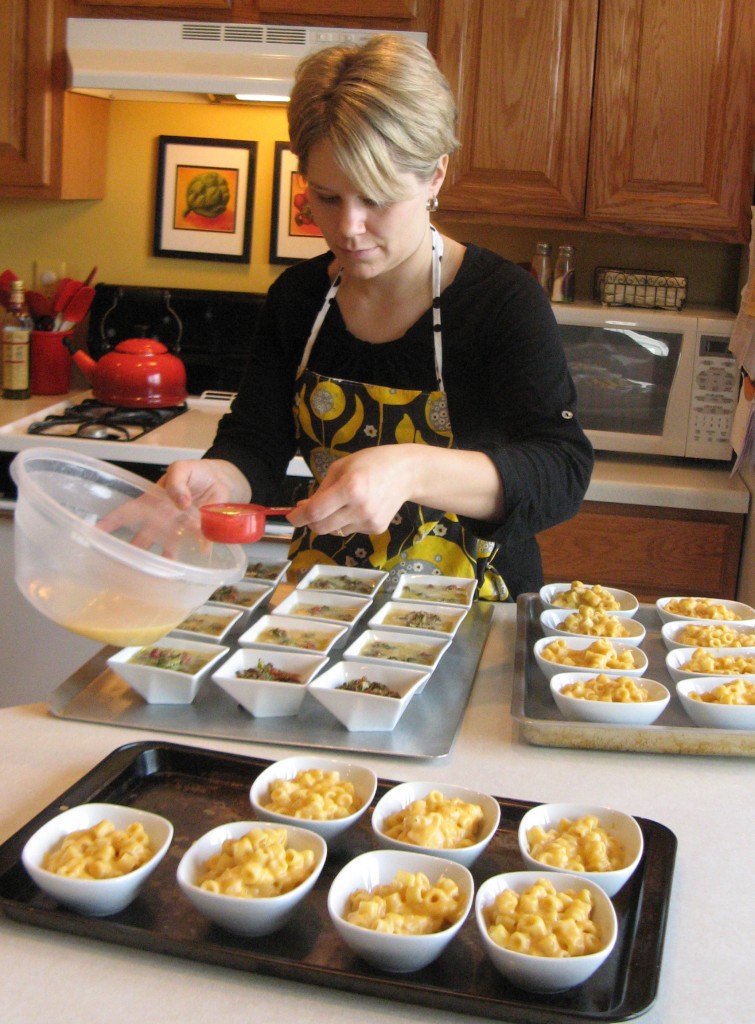 Recipes that work
Recipes that work
Make-ahead dinners can be anything that can be prepared and assembled and then frozen before the final cooking stage. Lasagna is a classic example — and if you think about how lasagna works and you’ve got the criteria for choosing a recipe:
- Ingredients that have some kind of individual preparation (brown meat, cook noodles, simmer sauce)
- An assembly step (layer sauce, noodles, cheese filling)
- A final baking/cooking step
Any recipe that follows these steps can be made ahead, frozen after the assembly step but before the final baking or cooking step, then thawed and baked as if you assembled it all that day. It may not be quite as perfect (freezing can sometimes add moisture to your dish), but it’s usually very good and perfect for end-of-a-busy-day family dinners.
Casseroles such as lasagna, mac & cheese, tuna noodle, turkey tetrazzini, and chicken and rice are the classics of make-ahead meals, but other categories work equally well, including soups, stews, chili, burritos, or sauces meant for pasta or rice (that you will make the fresh later).
You can freeze meals intended for the crock pot, too. If it meets the criteria above, try it. Prep/pre-cook ingredients and instead of putting it in the crock pot, put it in a large Ziploc freezer bag instead. Thaw the bag in the fridge for a day (put it on a plate), pour into crock pot, turn on, and leave for work!
Muffins and quick breads can be made ahead and frozen before baking. Frozen pancakes and waffles reheat quickly and beautifully for super-fast hot breakfasts.
How to freeze your recipe
Here’s the key to tasty make-ahead meals: Don’t pre-cook it. Stop after assembly but before the final bake or cooking step.
For example, if you are making turkey tetrazzini, you would boil the noodles, make the white sauce, shred the turkey, saute the mushrooms, etc. Then mix it all together and pour it into the pan you will freeze it in. Let it cool absolutely completely — do not get impatient. Snap on the lid, tape the baking directions to it to save you having to look it up again later, and tuck in the freezer. Done!
For soups, stews, chili, and sauces, finish your sauce, except for final seasoning corrections (the flavors will deepen with time and you may over-salt it). Let it cool completely and freeze.
For baked goods like muffins, scoop the batter into lined pans (you’ll need to use liners) and freeze them in their pans, removing them once they’re hard and storing them in Ziplocs. Then when you’re ready to use them just add 5-10 minutes to the baking time. It doesn’t take any more time overall and results in a better tasting product than thawing a frozen muffin in the microwave. And, you can make just two or three muffins at a time – fresh muffins every morning!
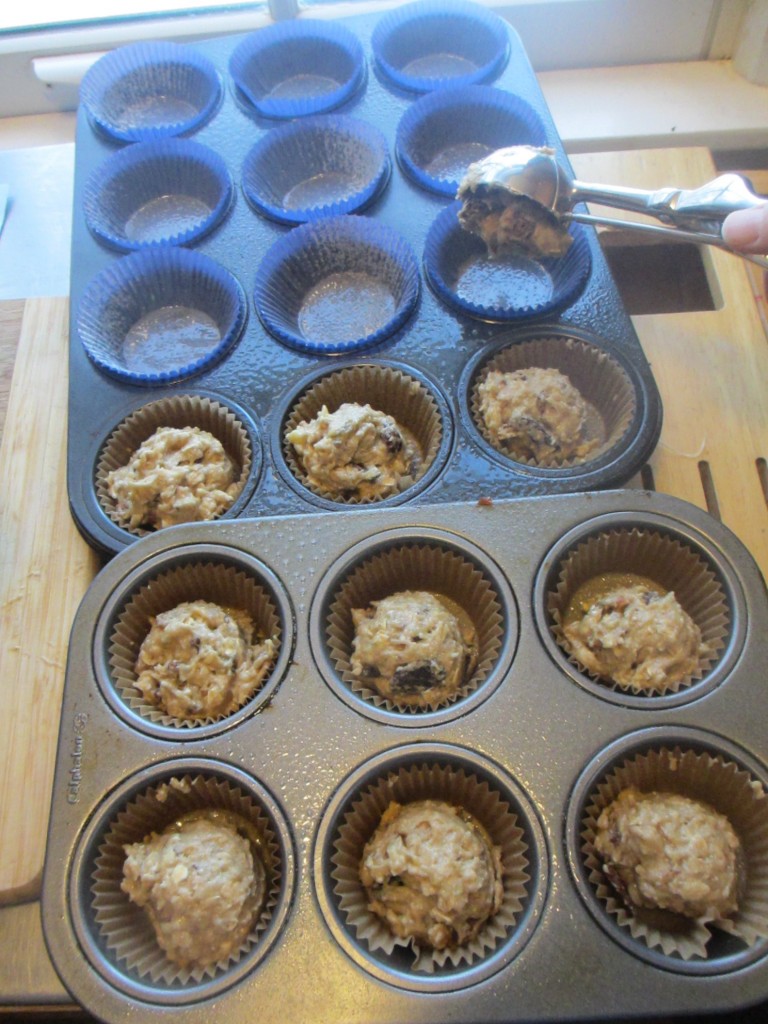
For pancakes and waffles, though, the rules are different: cook those first, let cool completely, and freeze in a Ziploc with a square of parchment or wax paper between each. This makes it easy to remove one or two at a time for reheating. I reheat mine in the toaster.
What to freeze in
Glad’s OvenWare pans are my favorite meal-freezing pans. These are light, oven-safe, BPA-free plastic with plastic, tight-fitting lids. They stack in the freezer and can be washed in the dishwasher and reused for years.
Best of all, they come in a nice, small 8X8 size, perfect for splitting your recipe into two or even three pans. Smaller portions reheat more quickly and cook more evenly, and the 8X8 square thaws perfectly on the counter by 5 p.m. if you take it out before you leave for work in the morning. The small square is plenty for my family of four, and sometimes yields one portion left for lunch the next day.
OvenWare can be harder to find, but it can be ordered on Amazon. (I have owned or had in circulation up to 30 of these at a time!)
Other great containers for freezing are:
- Ball’s plastic freezer jars for sauces, soups, or individual servings. These come in two sizes that fit perfectly in your freezer door and have very tight-fitting, screw-on lids. Glass Ball or Mason jars will also work for sauces and soups, but leave room at the top for expansion.
- Gallon-sized freezer bags. For soups and other liquid-y items, freeze them flat so they are as thin as possible. Use these for recipes headed for the crock pot.
- Disposable foil pans covered with aluminum foil. To preserve quality, let your dish cool completely, then cover very tightly (pinch every inch of the seal with your fingernails) with heavy-duty foil. Foil wrapped pans will not hold your food as long as the OvenWare pans will, but their advantages are clear: inexpensive, no cleanup, and tons of size choices. (I used to use mini loaf pans for meals-for-one for my grandma. When stocking my own freezer there was always enough to make one or two mini pans of each recipe.)
A few other tips
Freezing and thawing can add extra liquid in your dishes, which can extend cooking time or make it look not quite as pretty as you wanted. To minimize this, make sure you drain everything really well, and don’t put the lid on your casserole pan until it is completely cooled to room temperature. Trapped steam makes ice and water.
If you use Glad OvenWare, please, please read the instructions and set your pan on a cookie sheet — it will melt if you don’t! The clear plastic lids that come with them are not oven-safe. If you need to cover during cooking, use foil.
Make a file on your computer with all your favorite make-ahead recipe names and instructions for final baking/cooking. That way you can print them out as needed. A piece of paper taped on worked better than a sticky label; the tape stays on a plastic OvenWare lid just well enough to get the job done and pops right off. This saves tedious label-removing if you are reusing the pan.
Recipes
Now that you know how to get started, check out these recipes in the rest of our Stocking the Freezer series:
Casseroles
Sauces
Breakfasts
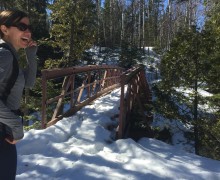

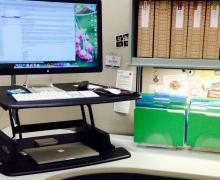
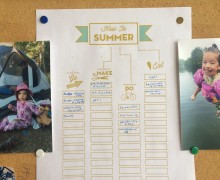
Thank you for the tips. God Bless! 🙂
For the chicken pot pie do you put the crust on and bake it first before putting it in the freezer?
Hi Kris,
Thanks for reading! For the chicken pot pie, I would freeze the filling in the pan I was going to bake it in first, without the crust. Then, when it was thawed on the day I want to bake it, I would add the crust and bake.
On all the casseroles, I freeze them before the final baking step. This improves the quality of the finished product a lot. Just thaw the casserole all day on the counter (or overnight and all day in the fridge) and then bake as the recipe directs, checking for doneness and possibly adding a few minutes if not fully thawed.
Hope this helps!
Jen
Thank you so much!!!!
Knowing you’re also in Minnesota, have you tried storing/freezing food in a porch or garage during the winter, rather than in a freezer? Would food get too dehydrated or be more likely to suffer freezer burn? I’m considering storing food in an animal-safe container in the porch to relieve the burden of my over-stuffed freezer as I prepare postpartum meals, and thought you may have experience in this!
Hello fellow cold-weather dweller!
I have in fact stored food on my deck in the winter, however it wasn’t for long-term storage — more like a few days at the holidays whenI had a crowd in my house and too much food for my appliances. I’m not sure if it would be any different; it seems to me if you have it in tightly sealed containers and then use something sealed outside, it might work. Let us know and congratulations on your upcoming baby!
Jen